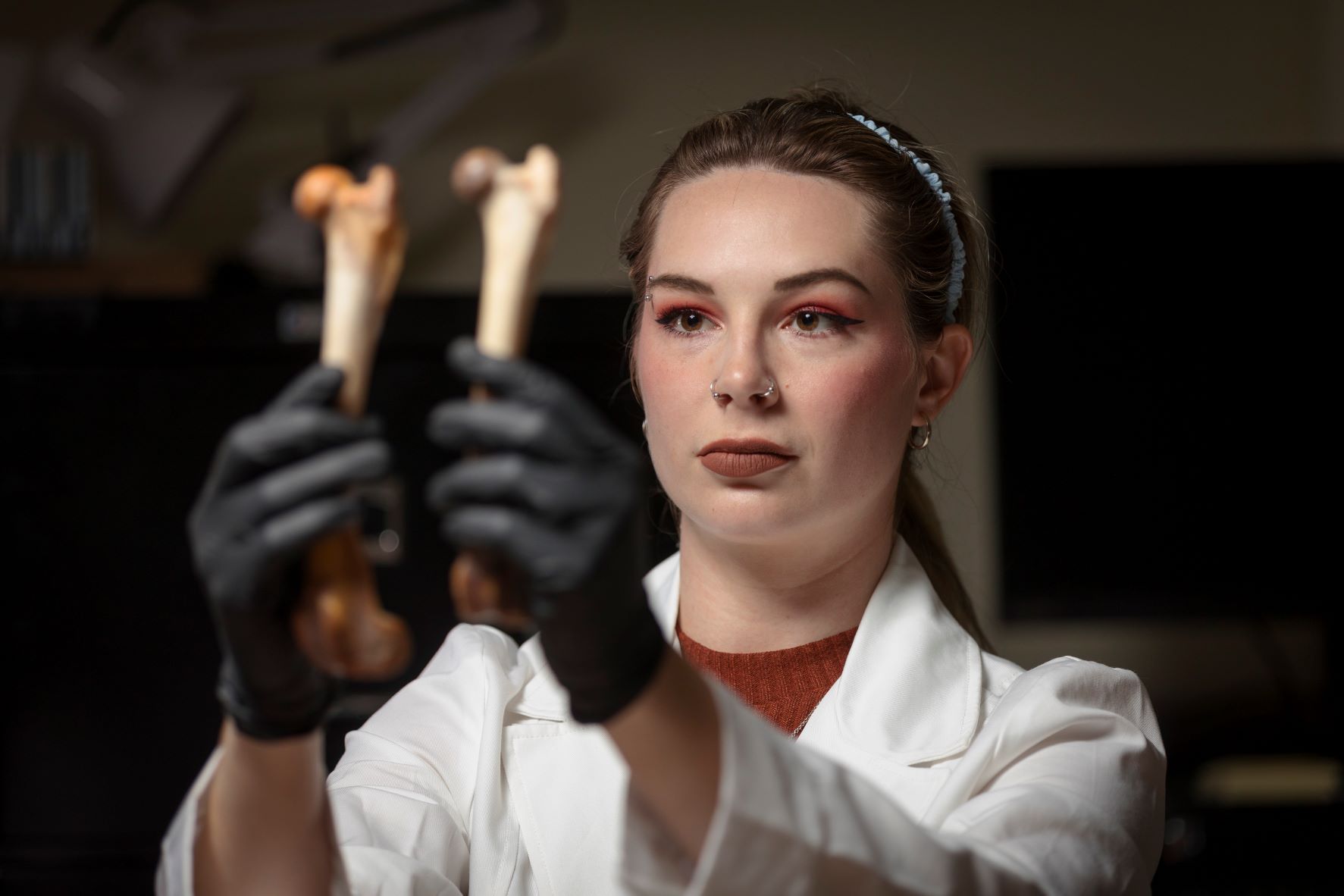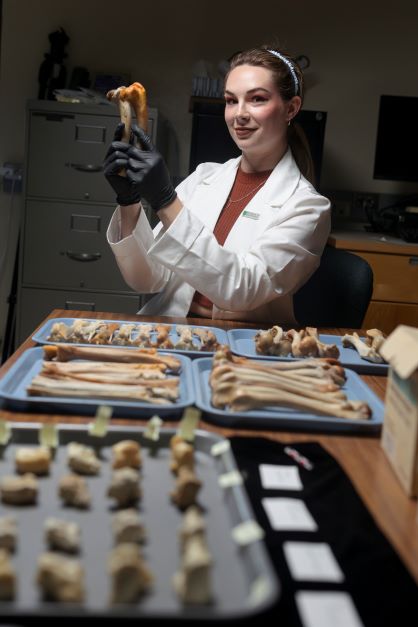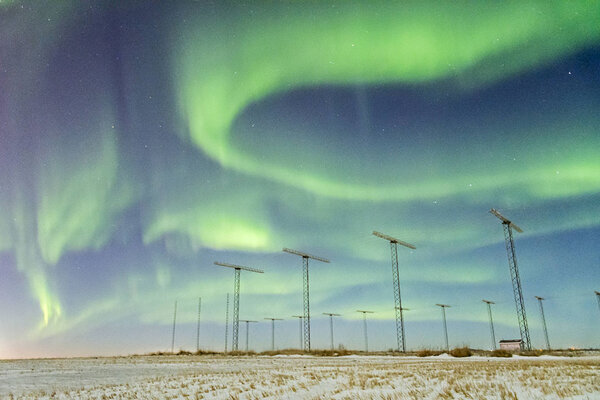
Studying modern-day dog bones may deepen knowledge of ancient dog-sledding activities
Jessica Sick, a USask archaeology graduate student, is examining entheseal changes on skeletal remains of Canis familiaris
By Shannon Boklaschuk
A University of Saskatchewan (USask) archaeology student is studying modern-day dog specimens in an effort to shed new light on Indigenous dog-sledding practices of the past.
“Though the importance of Indigenous dog sledding is well known, its history and development remain poorly understood,” said Jessica Sick, who is pursuing a master’s degree under the supervision of Dr. Tatiana Nomokonova (PhD) and Dr. Angela Lieverse (PhD) in the Department of Archaeology and Anthropology in USask’s College of Arts and Science.
“We know that dog sledding enabled for rapid transport across Northern Canada and Greenland during the Thule period around 700 years ago, but the material record is limited,” said Sick.
“Given that Canis familiaris has been our longest-known domesticated species, studying entheseal changes on dogs to identify working activities is an excellent opportunity to examine how daily human-animal relationships affect skeletal morphology during life and over long-term evolutionary processes.”

Entheseal changes are alterations that can be observed in muscle and ligament attachment sites on bone. Sick said that repetitive and strenuous physical activity throughout an animal’s life—such as participating in sled pulling—could change entheseal structure over time. By studying these entheseal changes on modern-day North American dog bones, Sick’s research aims to better understand the lives of sled dogs of the past, including what activities they may have participated in, how they moved and how they interacted with humans. She is also interested in learning more about the human-dog relationship, the history of domestication and how humans and dogs co-evolved together.
Currently, archaeologists are unable to identify ancient sled dogs through skeletal remains alone, said Sick. Instead, researchers usually identify ancient sled dog remains by finding other archaeological materials, such as harness pieces, buried alongside or nearby the bones.
This summer, Sick is working in a lab on the USask campus, where she is studying dozens of modern-day dog bones and is carefully documenting the differences she observes between working and non-working dog remains. Her goal is to develop a visual scoring method for entheseal morphology, using modern dog specimens, which can eventually be used to identify sled-pulling activity in archaeological remains.
Sick said similar research has recently been conducted on entheseal changes in other working animals, such as in reindeer and horses, as well as in humans, and she wants to build on that work.
“We’re taking that and we’re applying it to dog skeletons to see if we can apply the same logic and find similar outcomes,” she said.
Sick’s master’s thesis is part of a larger project focused on Indigenous dog sledding in the Circumpolar North, which is funded by the Social Sciences and Humanities Research Council (SSHRC) and led by University of Alberta archaeologist and USask adjunct professor Dr. Robert Losey (PhD).
Sick hopes her research will lead to a new standardized scoring system that can be used by other researchers studying entheseal morphology in ancient dog skeletons now and into the future.
“This work will not only benefit the larger project by providing new avenues of exploration for identifying the history and development of Indigenous dog sledding, it will extend entheseal changes research beyond its current boundaries and allow further exploration into using skeletal remains to reconstruct life histories,” she said.


